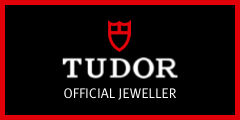ANTIQUE & ESTATE
At Underwood’s in Jacksonville, Florida we offer Estate, vintage and antique jewelry in our Avondale location on Saint John’s Avenue. Each piece of Estate Jewelry tells its own story and history through its timeless beauty. You may pick up a ring in our Estate case in Avondale and wonder, “who was the original owner, and for what occasion did they receive this piece.”
Definitions of Estate, Antique & Vintage Jewelry:
The definition of “Estate Jewelry” means previously owned. It could be one hundred years old or a couple months old. An antique piece of jewelry is over one hundred years old and vintage jewelry is much younger, but typically manufactured before 1999.
How is Estate Jewelry Valuated?
Each item in our Jacksonville, Florida Estate Department is hand selected by one of our Certified Gemologists and assessed for its rarity, quality and beauty. The items are then refurbished by our Master Jeweler for daily wear. Some of the valuation factors that come into play when pricing our Estate jewelry are market demand, current gold and diamond prices, age, condition, hallmarks, signatures, origin and style.




